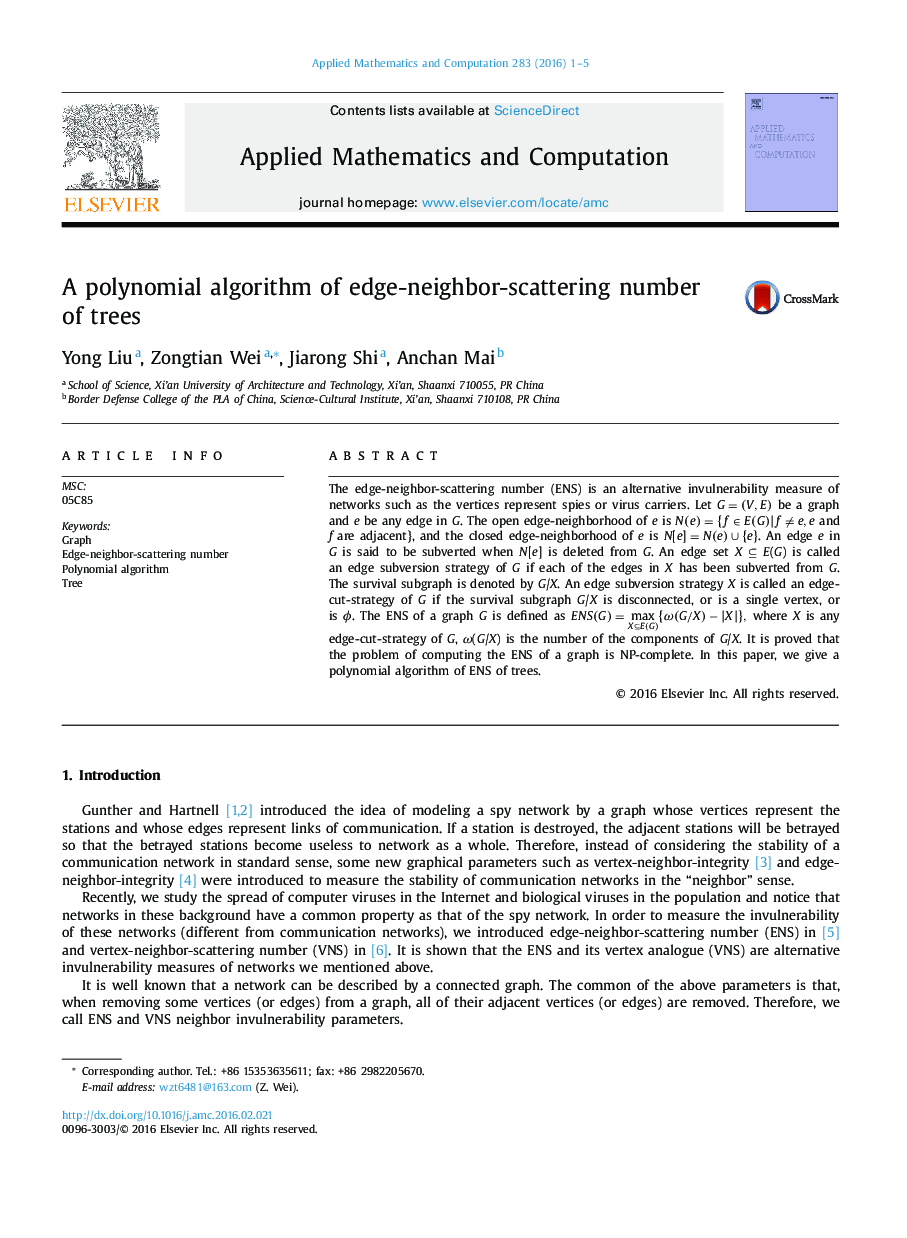| Article ID | Journal | Published Year | Pages | File Type |
|---|---|---|---|---|
| 6419785 | Applied Mathematics and Computation | 2016 | 5 Pages |
The edge-neighbor-scattering number (ENS) is an alternative invulnerability measure of networks such as the vertices represent spies or virus carriers. Let G=(V,E) be a graph and e be any edge in G. The open edge-neighborhood of e is N(e)={fâE(G)|fâ e,e and f are adjacent}, and the closed edge-neighborhood of e is N[e]=N(e)âª{e}. An edge e in G is said to be subverted when N[e] is deleted from G. An edge set X â E(G) is called an edge subversion strategy of G if each of the edges in X has been subverted from G. The survival subgraph is denoted by G/X. An edge subversion strategy X is called an edge-cut-strategy of G if the survival subgraph G/X is disconnected, or is a single vertex, or is Ï. The ENS of a graph G is defined as ENS(G)=maxXâE(G){Ï(G/X)â|X|}, where X is any edge-cut-strategy of G, Ï(G/X) is the number of the components of G/X. It is proved that the problem of computing the ENS of a graph is NP-complete. In this paper, we give a polynomial algorithm of ENS of trees.
